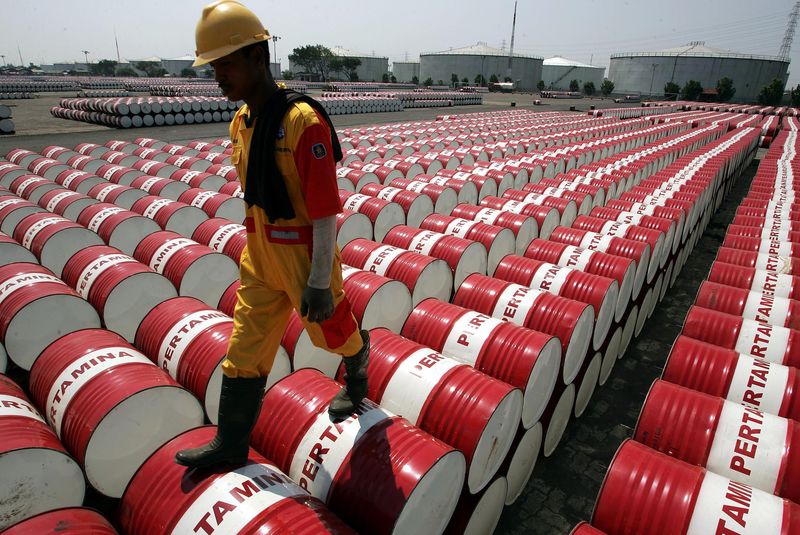* IEA sees OPEC expanding crude production by 1.95 million bpd by 2022
* Iraq says ready to join potential OPEC output cuts in second half of 2017
* China cuts economic growth target to 6.5 percent (Adds more comments from Iraq's oil minister)
By Jessica Resnick-Ault
NEW YORK, March 6 (Reuters) - Benchmark Brent gained while U.S. crude eased slightly on Monday, after the market pushed higher early in the day on reports that Iraq would participate if OPEC extended oil production curbs into the second half of the year.
Output forecasts from oil ministers of crude-producing countries buffeted the market as industry leaders gathered at the annual CERAweek energy conference in Houston. Prices have been rangebound for more than 60 days on concerns U.S. production growth may undermine the Organization of the Petroleum Exporting Countries' agreement to cut output during the first half of the year.
"We're still searching for direction," said Carl Larry, director of business development at Frost and Sullivan. "We couldn't push it up too far too fast and get over $55," he said, noting that U.S. oil prices had edged upward but not broken out of the range.
"People are looking for reasons with CERAweek this week. Right now, we're still stuck in the middle."
U.S. West Texas Intermediate crude CLc1 settled down 13 cents at $53.20 a barrel. Brent crude LCOc1 settled up 11 cents at $56.01 a barrel.
In a session driven by headlines, oil earlier strengthened slightly after Iraq's oil minister was quoted as saying that OPEC would likely need to extend production cuts into the second half of 2017.
But the oil minister, Jabbar Al-Luaibi, later told Reuters it is too early to discuss whether the policy should be continued. "It will depend on oil prices and market stability. If OPEC decides cuts, then Iraq will cut," he said. agreed to reduce production by 210,000 barrels per day under the deal but OPEC's second-largest producer had originally sought to be exempt from any cuts, saying it needed the revenue to fight an Islamic State insurgency.
"I think that has stopped some of the selling pressure that we opened with," said Gene McGillian, head of market research at Tradition Energy.
Still, he cautioned that OPEC's cuts have not yet altered the overhang in oil inventories substantially.
"The idea that we can extend it would be supportive in the medium term," he said. Statements from Saudi Arabia, OPEC's largest member, would be needed to push the price substantially higher, he said.
U.S. oil prices later swung lower after the International Energy Agency (IEA) forecast potential shale oil growth and waning European refined product demand, factors which work against global efforts to end a glut.
U.S. shale oil production may grow by 1.4 million barrels per day by 2022 with prices at about $60 per barrel, the IEA said in a report. More than 3 million bpd of capacity growth could be generated if prices rise to $80 a barrel, the agency said. At the same time, demand for European refined products is seen weakening. on Monday, oil retreated as China lowered its growth target for the year to 6.5 percent, compared with 6.7 percent last year, and tightened regulatory controls in an effort to tackle pollution.
